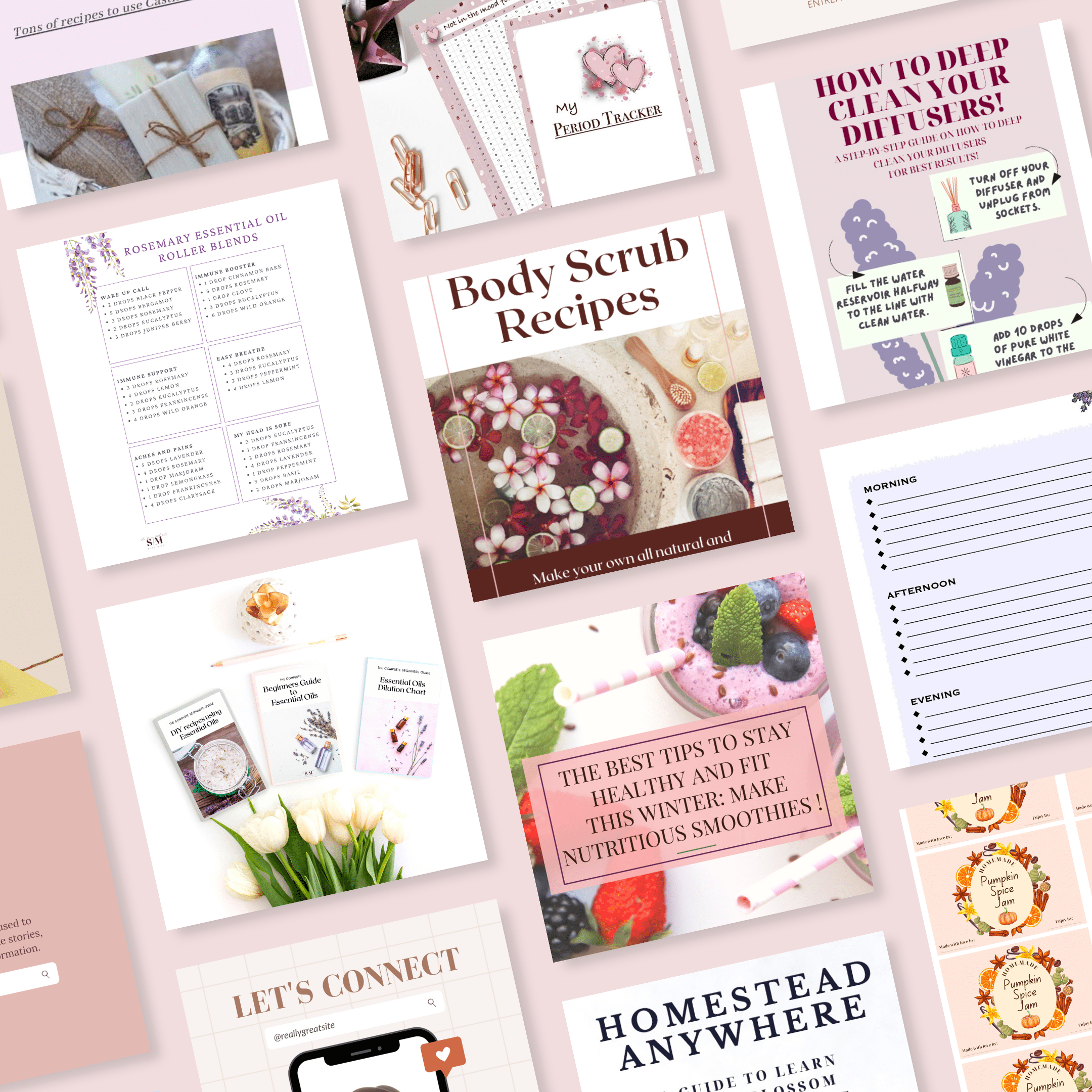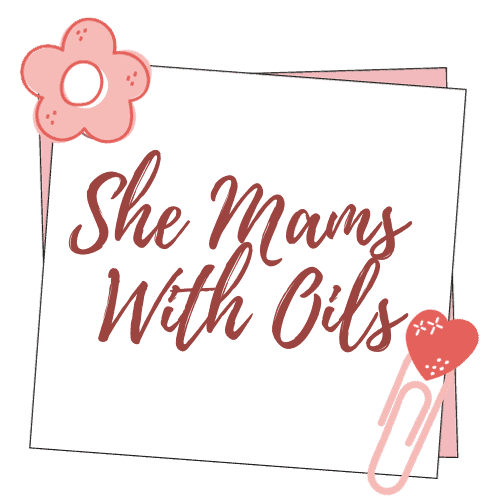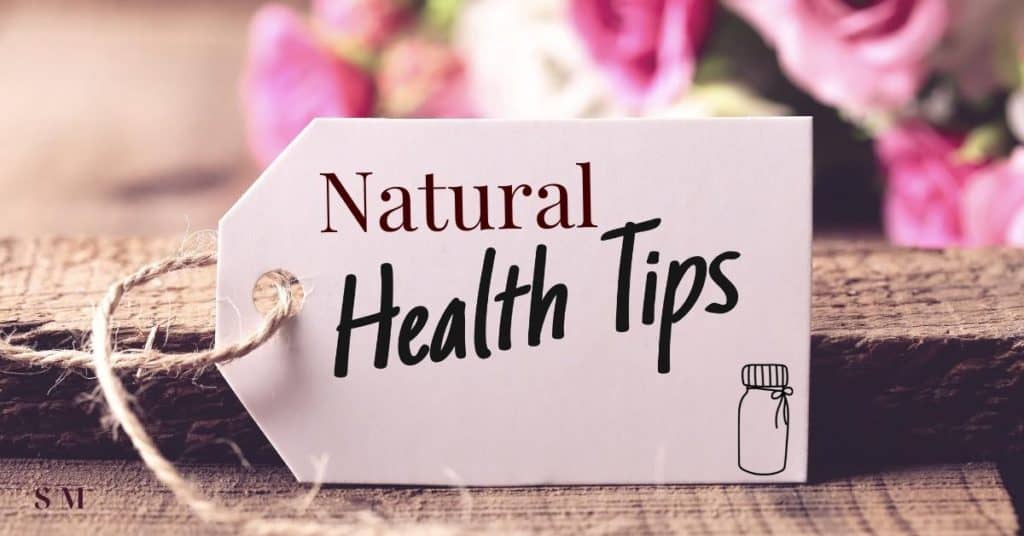THE BEST ESSENTIAL OILS FOR FEVER
What are the best essential oils for fever? There are many oils that can help you bring down a high temperature.
For example:
- Peppermint;
- Eucalyptus;
- Clove;
- Lavender;
- Etc.
Read this blog post to learn what are the essential oils I use in my home when anybody is sick with colds and flu, and to learn how to use those precious oils.
Support your immune system naturally this coming winter using only natural remedies.
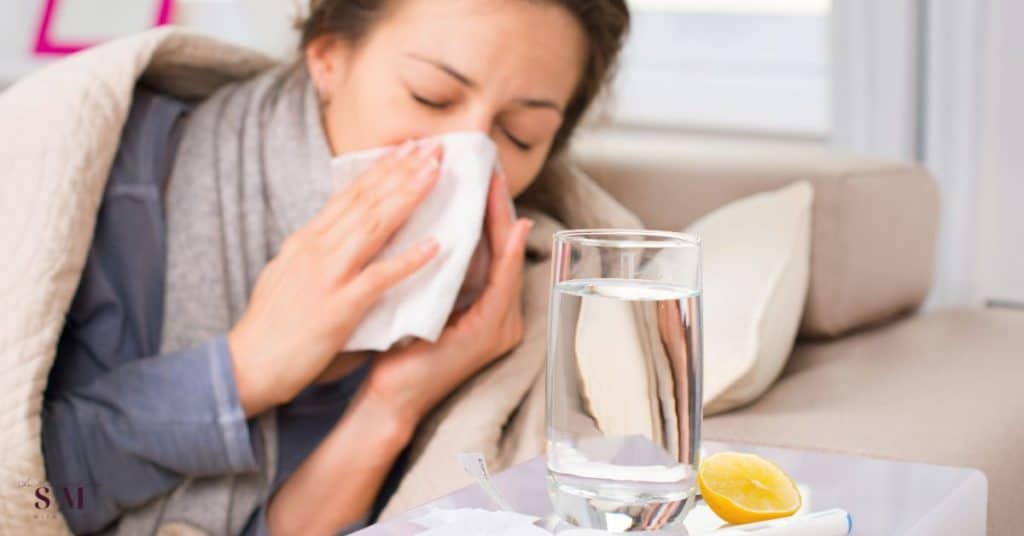
Our body is an absolute miracle of nature. It can perform incredible self healing actions when something is wrong in order to restore balance.
However, sometimes you will need the help of a medicine or a natural remedy in order to get better.
When it comes to a fever, essential oils can provide support for your body so that it can do what it does best: heal naturally.
In this blog post I’m going to share with you:
- what is a fever and what are its symptoms;
- the causes of a fever and what to expect from it;
- the use of essential oils to bring down a fever fast;
- the best essential oils for fever.
KEEP IN MIND
The content of this post refers to fever in adults only! For the majority of adults, in fact, a fever is not generally a cause for concerns. On the other hand, children or older people might be at serious health risk even with a low temperature.
IMPORTANT
The content of this blog post is intended for information purposes only. It is not intended to replace professional medical advice.
I am not a doctor and I’m only sharing my personal experience here.
If you are unwell or sick, always ask your trusted doctor or medical practitioner for advice. Pay particular attention if you are allergic or intolerant to any food and/or medication, if you are pregnant or breast-feeding. Children and elderly people should also seek medical attention quickly if unwell or experiencing any symptom.
Even if you don’t experience any symptom, always contact your trusted medical provider if in doubt. If you feel unwell and are worried, it is safer to ask for medical advice from a professional than to wait.
Never risk it!
WHAT IS A FEVER?
The average body temperature for an adult is around 37C (98.6F). A fever is when your body’s temperature rises temporarily, due to an illness or infection. The rise in temperature is a sign your immune system is fighting to restore the balance in your body. So, in other words, a fever is a good sign. It means your body is working hard to heal whatever is causing you to be sick. High fevers are the body’s way to heal naturally.
WHAT CAUSES A FEVER?
According to the Mayoclinic website: “Fever or elevated body temperature might be caused by:
- Viral infections;
- Bacterial infections;
- Heat exhaustion;
- Certain inflammatory conditions such as rheumatoid arthritis — inflammation of the lining of your joints (synovium);
- A cancerous (malignant) tumor;
- Some medications, such as antibiotics and drugs used to treat high blood pressure or seizures;
- Some immunizations, such as the diphtheria, tetanus and acellular pertussis (DTaP), pneumococcal or COVID vaccine.”
how does the body regulate body temperature?
Even when you are healthy, your typical body temperature is not static throughout the day. Indeed, your temperature varies depending on a series of factors, such as activity or external elements.
Your body temperature is a careful balance between heat production and heat loss. The part of the brain that is responsible to maintain this balance is called the “hypothalamus”.

WHAT DOES THE hypothalamus DO?
The hypothalamus has many functions in your body. When your immune systems is triggered in response to a disease or infection, the hypothalamus rises your body temperature by producing more body heat and limiting heat loss.
For example, it is typical to experience shivering when you have a fever. Shivering is a way for your body to produce more heat.
what are the symptoms of a fever?
There are a number of fever symptoms. You might experience only a few of them or many.
Healthline.com describes the symptoms of fever as follows: “You may have a fever if you have a temperature higher than 98.6°F (37°C).
Other symptoms may include:
- chills
- shivering
- skin redness or flushing
- sweating
- aches and pains
- headaches
- lack of appetite
- dehydration
- weakness
- fatigue.”
HOW LONG DOES A FEVER LAST?
Generally speaking, a fever is only temporary and will resolve in a couple of days.
However, sometimes it can last more than 2 to 3 days. If that is the case, you should see a doctor, as the fever might be a sign of a serious condition and you might need medical attention.
The message is, as always, don’t risk it!
WHEN SHOULD YOU SEE A DOCTOR FOR A FEVER?
As mentioned above, a fever in adults is generally speaking only temporary and not harmful.
You might experience a general sense of discomfort but not pain or extreme symptoms.
However, always seek immediate medical attention if you:
- Have a temperature higher than 39.4C (103F);
- Experience a severe headache;
- Develop a rash;
- Are unusually sensitive to bright lights;
- Find it difficult and/or painful to move your head as a result of a stiff neck;
- Experience mental confusion, slurred speech, or any unusual behaviour;
- Have laboured breathing;
- Feel pain in your chest;
- Start vomiting, with or without abdominal pain;
- Find it difficult or painful to urinate;
- Have convulsions or seizures.
IMPORTANT
Even if you don’t experience any of the above symptoms, always contact your trusted medical provider if in doubt. If you feel unwell and are worried, it is safer to ask for medical advice from a professional than to wait.
What can you do to relieve a fever?
A fever might certainly be uncomfortable for you. Good news is there are a few things you can do to relieve it naturally at home.
Let’s have a look at some of them.
Rest
The first thing I’d mention is obviously rest.
When you are unwell, your body needs a lot of energy to recover and heal, so it is wise to take it easy and avoid all strenuous activity. If you can, simply lie down in bed or on your sofa. This “forced” rest period could be the ideal time to finish that book you were reading, or to catch up with your favourite tv show.
Try to limit heat loss
As explained earlier, when you have a fever your body will increase your normal temperature, while also limit heat loss.
As you lie down, wrap yourself in a warm blanket to keep your temperature up and therefore speed up recovery.
consume hot drinks and foods
Consuming hot foods and drinks (such as soups and teas) can help in keeping your body temperature high in order to help with your recovery.
Always make sure food and drinks temperature is right for you, to prevent scalding and burning!
INCREASE LIQUID INTAKE
Keeping your body well hydrated is always important. Even more so when you are sick.
According to Harvard Health Publishing, increasing you liquids intake can help regulate your body temperature, help fighting infections and help with providing the necessary nutrients to your body cells.
If you have a fever, make sure to drink plenty of liquids. Drink plenty of fresh water or teas, but try to stay away from excessive intake of caffeine. Avoid consuming carbonated drinks, alcohol and sugary beverages.
Coconut water
Coconut water is an excellent drink to consume on a regular basis, but even more so if you are sick. It hydrates, helps to replenish vital electrolytes and is high in potassium.

INCREASE VITAMIN C INTAKE
As you know, vitamin C plays an important role to support your immune system.
Unfortunately our body doesn’t store vitamin C, and the excess you consume is normally expelled through our urine.
This is why, when you are sick, it is important to up your intake of vitamin C, to make sure your body has enough.
Freshly squeezed juices are excellent, and you can try a mix of fruits and vegetables ones.
AVOID HARD TO DIGEST FOODS
When you are sick, your body needs a lot of energy to heal. It makes sense then to avoid all fatty and hard to digest foods, so that you don’t strain your digestive system.
When dealing with a fever, try to consume simple foods such as soups, fresh fruits, cooked vegetables, grilled chicken and fish.
USE OVER THE COUNTER MEDICATIONS
A mild fever is normally not a cause for concern, and you should not use any medication unless needed, and as prescribed by your doctor.
However, there are some over the counter medications you could take to relieve some discomforts and to bring down a temperature fast. Paracetamol and ibuprofen come to mind.
IMPORTANT
Always read the label carefully before consuming any medication. Never exceed the recommended dose. Ask for the advice of your pharmacist if in doubt, and if you are already taking other prescriptions, if you are allergic to any ingredient, if you are pregnant or breastfeeding.
Moreover, contact your doctor immediately if your symptoms don’t improve or if you get worse.
If you are looking for natural remedies to stay healthy this winter, I have a dedicated blog post, so go check it!
WHAT ESSENTIAL OILS HELP BRING DOWN A FEVER?
Thankfully, there are many essential oils that can help with bringing down a fever.
Essential oils are little power houses and can get to work super fast, relieving many of the discomforts that come with a high temperature.
Oils can break a fever and cool you down. They can help you sleep if you struggle as a result of aches and pains. Some of them can help support your immune system in order to fight the infection that is causing the fever. The list of their uses and benefits is indeed very long!
important
Only use 100% unadulterated and pure essential oils, from a reputable company.
Never use essential oils topically unless properly diluted and after a patch test.
Pay particular attention if you are pregnant, breast-feeding, or on older people and children.
Some people might develop skin irritations or adverse reactions.
Never ingest essential oils without reading the label first, as not all oils can be consumed internally.
Always talk to your trusted medical practitioner before using essential oils, especially if you suffer from any allergy, intolerance, are ill or are already taking any medication.
HOW do you use essential oils for fever?
As I’ll explain in a moment, Peppermint, Eucalyptus, Lavender, etc. are all good choices when it comes to my favourite essential oils to break a fever. You can use them as a single oil. But if you create a blend with them, they will work even better and faster.
Creating your own blend is super easy and in doing so, you can tailor it to suit your needs exactly.
Let’s have a look at the different ways you can use essential oils to support your body to bring down a fever.
ESSENTIAL OILS FOR BEGINNERS
If you are new to essential oils, you might not know where to start!
If that is the case, I have a post that will guide you through everything you need to get started. Make sure to go check it!
AROMATICALLY
You can place a few drops of your preferred oil or blend in the diffuser and let it run for as long as needed. Alternatively, you can smell the oil directly from the bottle.
Lastly, you can place a drop of essential oil on the palm of your hand, rub your hands together, cup them around your mouth and nose, and breath in to inhale the smell.
This last method is very effective especially if you have a stuffy nose, as it can relieve the upper respiratory tract.
TOPICALLY
Using your essential oils topically is a very good way to fight a fever. There are indeed so many ways you could do it!
I would definitively recommend you create a blend to maximise results.
MAKE A COLD COMPRESS
Simply prepare a bowl of cold water and add a couple of drops of your oil or blend of choice. Grab a wash cloth and soak it in the water. Squeeze it and then place it on your forehead for immediate relief.
Repeat the process when you feel the compress is no longer cold on your skin.
USE AN INFUSED NECK PILLOW
Place your favourite neck pillow in the freezer until it is cold to the touch (around and hour or two). When you take it out, simply add a couple of drops of essential oils on it and wrap it around your neck to cool you down fast.
infuse an eye mask
If you prefer, you can also infuse an eye mask (the fabric ones used for sleeping are perfect for the job). Place the mask in the fridge until cold, take it out and add 2 drops of your oil of choice. Wear the mask on your forehead for a cooling effect. Simple as that!
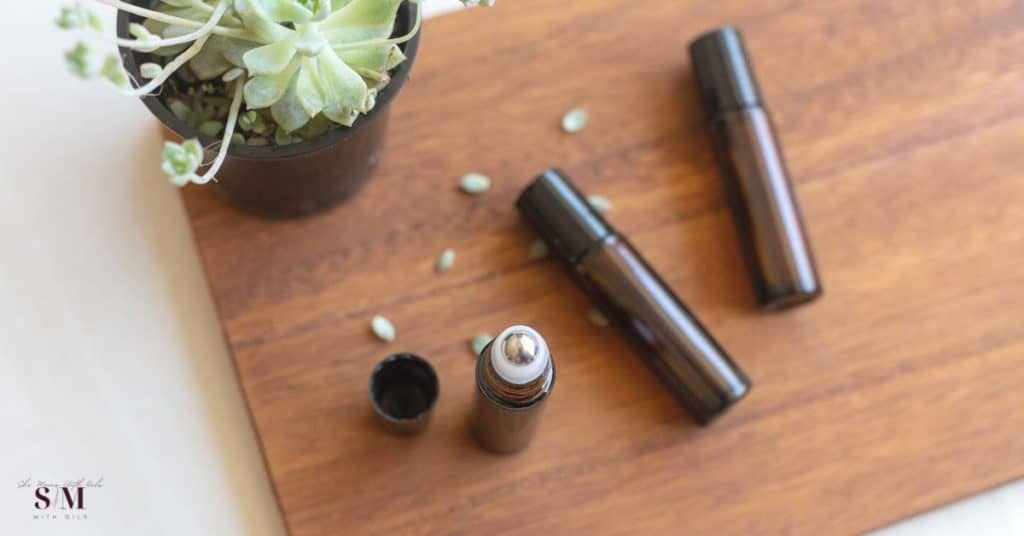
MAKE A ROLLER BOTTLE
I always have a pre-made roller bottle to fight fever ready. This way, if fever strikes, I’m ready to use it in a minute without having to worry about looking for the oils, or about the proper dilution ratio.
Where do I apply essential oils for fever?
Using a roller bottle is practical and discreet, and you can reapply the oils every two hours, or as needed. Simply roll the bottle along your spine (ask someone to help you with that), behind your ears, on your shoulders, under the bottom of the feet, and along the back of your neck. If you feel “chesty” you can also apply the oils on your chest.
PREPARE MULTIPLE ROLLER BOTTLES
Although it might seem like a waste of time, it is very handy to have a few different bottles ready for whenever you need them. Developing a fever can lead to several symptoms, and you might need different oils to relieve them.
For example, you could create a bottle for:
- Bring down a temperature (use peppermint, lavender and eucalyptus);
- Relieve a headache (use peppermint, rosemary, frankincense, basil);
- Help with sleep (use lavender, chamomile);
- Relieve nasal congestion and a runny nose (use eucalyptus, Doterra Air);
- Support your immune system (use Doterra OnGuard);
- Cool down your head (use peppermint);
- General pain relief all over your body (use copaiba, lemongrass, Doterra Deep Blue)
- etc.
When making any of the above blends, you can use only one oil, some of them, or all of the oils I mention.
Also, feel free to use another oil you find works well for you. The choice is yours.
IMPORTANT
Never use more than the recommended ratio of oils and carrier oil per roller bottle. Always follow proper dilution!
When making up a roller bottle, you could use several different carrier oils, such as olive oil, avocado il, coconut oil, jojoba oil.
ESSENTIAL OILS DILUTION CHART
YOU CAN GET MY FREE PRINTABLE with a safe dilution chart for essential oils here:
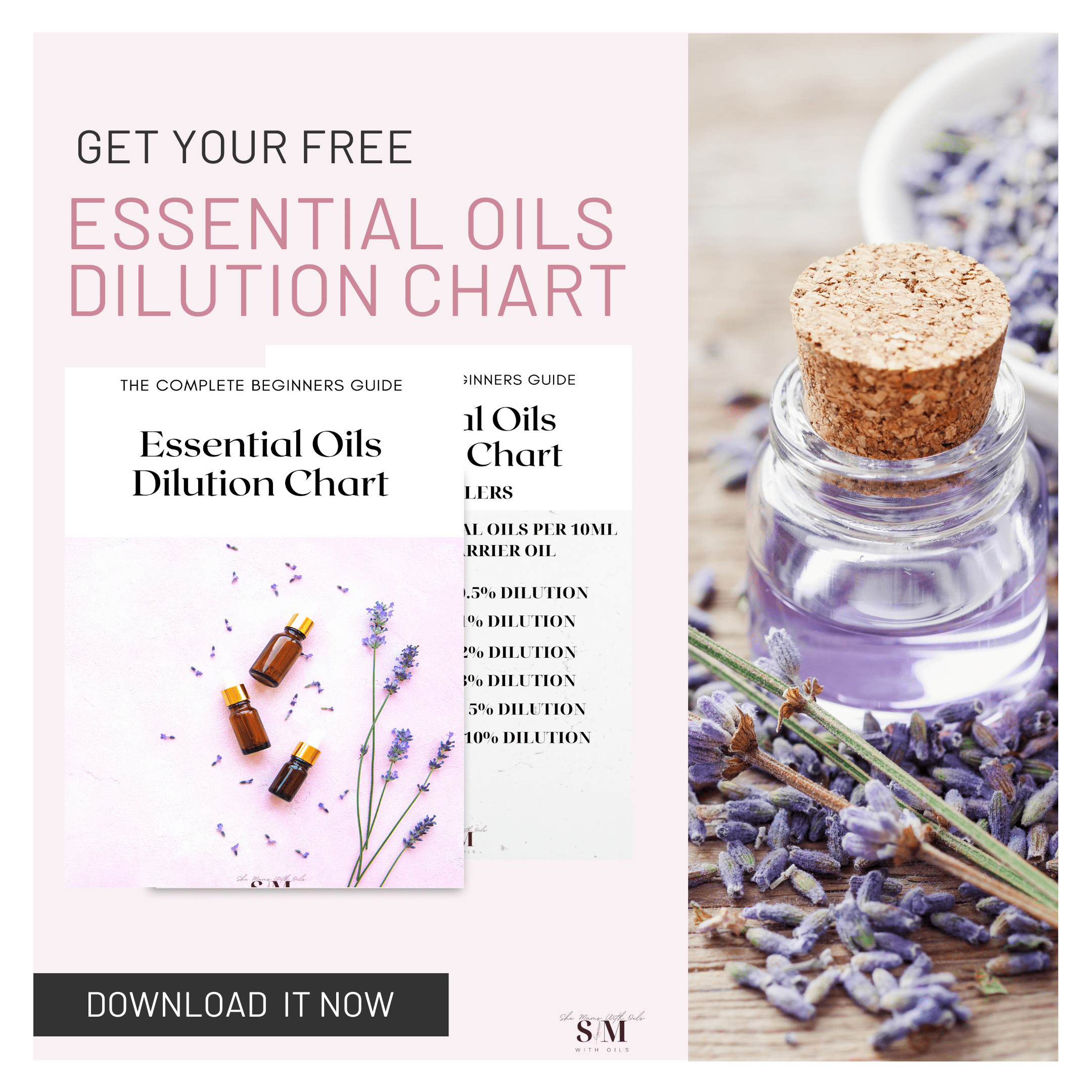
FREE DILUTION CHART FOR BEGINNERS ESSENTIAL OILS USERS.
MAKE UP A SPRAY BOTTLE TO DISINFECT YOUR HOME
When there are viruses or bacteria in your environment and they are causing you to get sick, it’s always a good idea to keep up with cleaning and disinfecting surfaces (especially around your kitchen and bathrooms).
You can easily make up a spray bottle using water (or vinegar) and some essential oils and use it around your home. This will give you peace of mind without using harmful chemicals.
INTERNALLY
Not all essential oils can be used internally. It is very important to refer to the “supplement information” provided on the label of each oil before deciding how to use it.
In addition to that, some oils are too strong to be consumed internally as they are. You will need to put a drop in a veggie cap before ingesting them.
For the oils that are safe to use internally and straight from the bottle, you can put a drop in your drink of choice, such as water, herbal teas, fresh juices and smoothies.
THE BEST essential oils for fever
Finally, here’s the list of the best essential oils for fever. Naturally, this is a list of the essential oils I would recommend, as I’ve tried them myself.
You might find that other oils work best for you, and some of the ones I mention simply do nothing for you. This is perfectly normal, as different people will react differently to different oils.
HOW FAST DO ESSENTIAL OILS WORK?
When it comes to using essential oils, there is a bit of trial and error involved in the process. Try an oil or two, see if it works, and if not feel free to switch to another oil.
The main thing to remember when using oils, is to be consistent. Essential oils are natural extracts and therefore they don’t act the same way as synthetic drugs. When you start applying an oil or blend, sometimes the relief is immediate and long lasting. Other times, you will need a few applications before you can see results. Be patient and consistent.
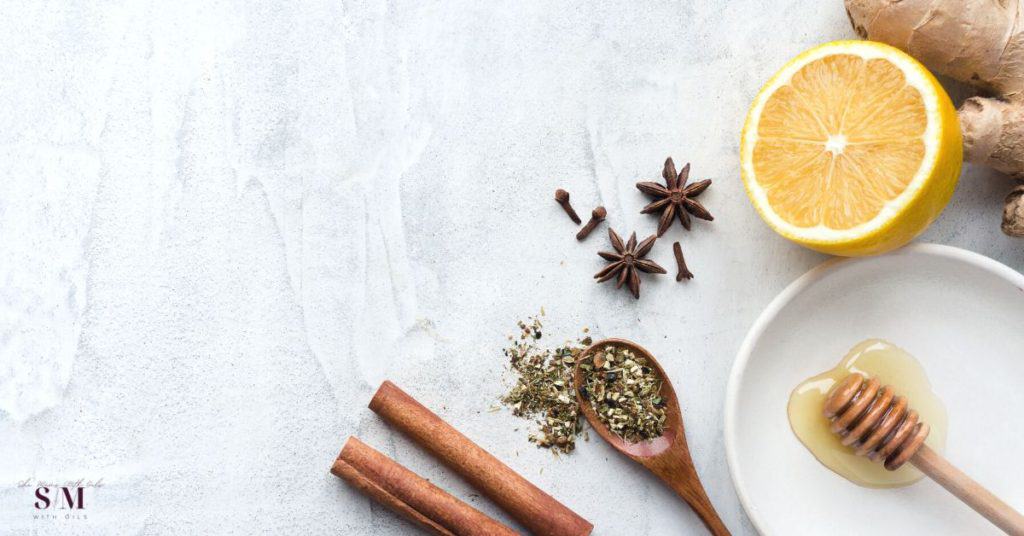
Frankincense ESSENTIAL OIL
The king of all oils, and my absolute favourite!
Frankincense essential oil is a powerful immune booster. It has anti-inflammatory, antiseptic, antibacterial, and antioxidant properties that make it an ideal oil to use for practically everything, hence its name “the king”.
Frankincense can be used aromatically, topically and internally.
ROSEMARY ESSENTIAL OIL
Another of my favourite oils. Rosemary has a strong but pleasant scent. It has immune boosting, antibacterial, antiviral and anti fungal properties.
It can be used to fight infections and to relieve headaches too.
You can use it aromatically, topically and internally.
Rosemary is a very strong oil, so it should only used topically if heavily diluted. For added safety, it is best used under your feet.
If consuming it internally, only use it if added to a veggie cap. Never ingest it straight from the bottle.
CHAMOMILE ESSENTIAL OIL
For the purpose of helping to fight off a fever, both German chamomile and Roman chamomile will work effectively.
Chamomile is widely known for its calming and soothing properties, particularly helpful in supporting a good night’s sleep.
This oil can also be used topically to soothe the skin in case of a rash or skin irritation.
Can be used aromatically, topically and internally.
LEMON ESSENTIAL OIL
Lemon is one of the most common and most sold essential oil. It has decongestant, antioxidant, anti fungal, antibacterial and antiviral properties.
It can be used topically, aromatically and internally.
Lemon oil is also very powerful when used in homemade cleaning products.
PEPPERMINT ESSENTIAL OIL
Menthol is the active compound present in this oil that make it ideal to fight fever, sore throat, congestion, headache and cough.
Peppermint oil is an “all rounder” really when ti comes to fighting a fever!
Use it aromatically, topically and internally.
If using topically, avoid contact with your eyes!
When consumed internally, you can add a drop of peppermint oil to water, fresh juice or tea. However, avoid consuming peppermint in the evening as it has stimulant properties and therefore might keep you awake during the night.
LAVENDER ESSENTIAL OIL
Lavender is such a pleasant oil that you can use daily, for many purposes and not only if you are sick.
Its calming aroma can not only help soothing a fever and the discomforts that can accompany it, but it is also very effective to promote a good night sleep. Proper rest, in turn, will support your body in fighting any infection and will speed up recovery.
You can use lavender oil aromatically, topically and internally.
HOLY BASIL (TULSI) essential oil
This is an oil I’ve discovered only recently, and I’m so glad I did!
I really love the scent and I diffuse it quite often in my home.
But this oil has many properties that go beyond a lovely smell.
According to Doterra: ”Native to Southeast Asia, this small, green, bushy shrub with lavender-hued flowers is part of the mint family. It has a history within Indian health practices as a natural solution for many conditions. Tulsi (Holy Basil) meaning “the incomparable one,” is considered “Queen of Herbs.”. ”
Tulsi can lower a high temperature, help fight germs and reduce inflammation and pain.
You can use it aromatically and topically.
Ginger ESSENTIAL OIL
Ginger oil is generally known for its anti-inflammatory properties. In addition to that, ginger can boost your immune system, reduce fever and relieve a cough. This oil is also antibacterial, antiseptic and acts as an analgesic.
You can use it aromatically, internally and topically.
EUCALYPTUS ESSENTIAL OIL
The very strong and potent eucalyptus oil is amazing at reducing fever (hence the name “fever oil”), soothe a congested nose and chest, relieve inflammation and fight germs.
You can use it aromatically and topically.
If using it aromatically, you can put a few drops in the diffuser and also on the shower tray (away from the direct flow of water): the steam produced by the hot water will release the aromatic properties of the oil so that you will inhale it while showering.
You could also make shower bombs using Essential Oils!
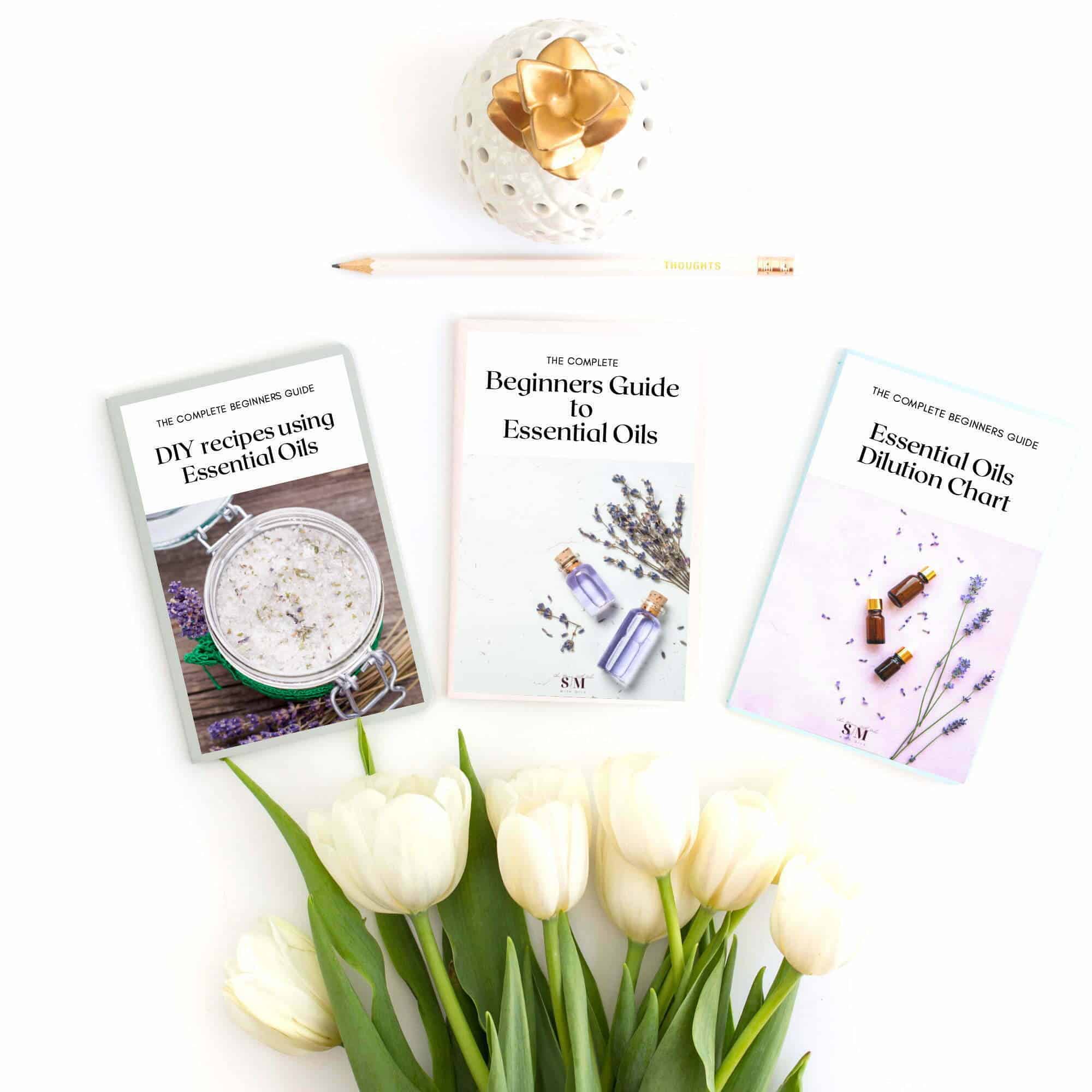
GET THE COMPLETE BEGINNERS GUIDE TO ESSENTIAL OILS!
Are you curious about what Essential Oils are, and what they can do for you and your family?
Did you know that EO have been used for centuries to help support our health and wellbeing?
If you want to learn more, I have created the perfect complete guide to beginners EO users. You can get it on my Etsy shop at a special introductory price.
TEA TREE ESSENTIAL OIL (or melaleuca)
Tea tree oil is a must have in every household, due to its many antiviral, antibacterial, anti fungal, disinfectant and anti-inflammatory properties. Melaleuca is also an immune booster.
The limit is your imagination!
You can use it aromatically, topically and internally.
Tea tree is probably best known for its ability to reduce the symptoms of the herpes simplex virus, responsible for cold sores.
If using it topically, you can use it also to get rid of parasites, such as head lice.
Melaleuca is very effective at preventing fungal infections. So, you could make a DIY spray cleaner to fight mold and mildew in your home, as well as germs.
RAVINTSARA ESSENTIAL OIL
A powerhouse of an oil, Ravintsara can:
- Fight off bacteria and viruses;
- Relieve congestion;
- Improve sleep;
- Reduce pain;
- Clear out excessive mucus;
- Help prevent colds and sinus infections;
- Ease headaches and fatigue;
- Boost your mood.
You can use it aromatically and topically.
CLOVE ESSENTIAL OIL
Clove is normally a staple in the kitchen. Its lovely flavour can make cakes and bakes taste divine, and envelope your kitchen in a yummy aroma.
But clove oil is widely known for its amazing properties to relieve pain (especially toothache), headaches, fight inflammation, boost immunity and kill germs. In addition to that, clove can also help in fighting free radicals.
You can use it aromatically, topically and internally.
Clove oil is a very strong oil, so it should only used topically if heavily diluted. For added safety, it is best used under your feet.
If consuming it internally, only use it if added to a veggie cap. Never ingest it straight from the bottle.
CINNAMON BARK ESSENTIAL OIL
Another kitchen staple, Cinnamon oil is probably the most powerful natural antibacterial and antiviral known to man.
Its properties include the ability to kill off germs, clear UTIs, reduce shivering and increase body temperature.
You can use it aromatically, topically and internally.
Cinnamon oil is a very strong oil, so it should only used topically if heavily diluted. For added safety, it is best used under your feet.
If consuming it internally, only use it if added to a veggie cap. Never ingest it straight from the bottle.
BEST essential oils for fever: CONCLUSIONS
When fever and colds catch up with one of my kids, as they inevitably do at some point during the winter months, I’m really glad I have a natural remedy such as essential oils that can provided immediate support.
So far our experience as a family has only been positive, and I hope this post will help you and your household too.
Feel free to share your experiences in the comment section below, I’d love to hear from you.
Till next time, Dee.
IMPORTANT
When using Essential Oils, make sure to use only CPTG Certified, Pure, Tested Grade ones, like Doterra Essential Oils. The content of this blog post and any information provided here has not been evaluated by any government entity or medical practitioner. It is NOT intended to diagnose, treat, cure or prevent any disease, illness or condition. It is NOT intended to be a substitute for medical counselling. If you are pregnant, breastfeeding, or suffering from any medical condition or illness or injury, you SHOULD consult a qualified healthcare professional before using any product.
Hi, I’m Dee!
Mom of three; printables creator, natural solutions, simple living and homemade food enthusiast; “Outlander” fanatic.
When I’m not busy writing and designing, you can always find me covered in a cloud of flour in the kitchen, playing and crafting with my children, or making up some blends with my Essential Oils. Also I’m practically obsessed with Crystals and reading during my spare time.
Come along on our crazy journey as a family living in the countryside of Ireland!
